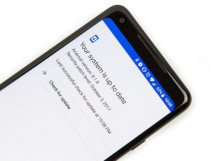Pixel won’t get KRACK fix until December, but is that really a big deal?
In October, security researchers discovered a major vulnerability in a Wi-Fi's WPA2 security called "KRACK." This "Key Reinstallation Attack" can disrupt the initial encryption handshake that happens when an access point and a device first connect, allowing an attacker to read information assumed to be securely encrypted. It's possible to totally defeat WPA2 encryption using KRACK, allowing a third party to sniff all the Wi-Fi packets you're sending out.













































































